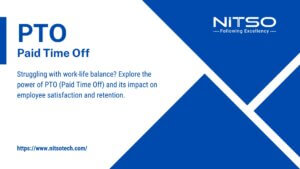In today’s complex and ever-changing business landscape, it is crucial for both employers and employees to have a solid understanding of labour laws. These laws govern the rights and responsibilities of workers and employers, and it is important to navigate them effectively to ensure a fair and productive working environment. This article will explore the key insights into employee and employer agreements, providing a comprehensive overview of labour laws and best practices for compliance.
Table of Contents
Understanding Labour Laws
Labour laws are a set of rules and regulations that aim to protect the rights and interests of workers and ensure fair treatment in employment. These laws cover various aspects of the employer-employee relationship, including recruitment, hiring, working conditions, wages, and termination. They are established at the local, state, and federal levels and may vary from jurisdiction to jurisdiction.
Article you might be intrested in: Labour Law in India: A Comprehensive Guide to Rights, Compliance, and Practices
The Employer-Employee Relationship
The foundation of labour laws revolves around the employer-employee relationship. Employers have a legal obligation to provide a safe and non-discriminatory workplace, while employees have certain rights and protections under the law. It is essential for both parties to understand their roles and responsibilities to maintain a healthy and compliant working relationship.
Employee Rights and Protections
Employees enjoy several rights and protections under labour laws. These include:
- Fair Wages and Compensation: Employees have the right to be paid at least the minimum wage and receive overtime compensation as per the applicable labour laws. Employers must also provide accurate payroll records and ensure timely payments.
- Safe Working Conditions: Employers are responsible for maintaining a safe and healthy work environment, free from hazards and potential harm. They must comply with safety regulations and provide necessary training and protective equipment.
- Protection against Discrimination: Employees are protected from discrimination based on factors such as race, gender, religion, age, disability, and national origin. Discrimination-free hiring, promotions, and work assignments are essential for maintaining a diverse and inclusive workplace.
- Protection against Harassment: Employees have the right to a workplace free from harassment, including sexual harassment. Employers should have robust policies and procedures in place to address complaints and prevent such incidents.
- Protection of Whistleblowers: Labour laws protect employees who report illegal activities or wrongdoing within their workplace. Employers cannot retaliate against whistleblowers and must take appropriate action to address the reported concerns.
Article you might be intrested in: Work Smarter, Not Harder: Practical Ways to Improve Work Performance
Best Practices for Compliance
To ensure compliance with labour laws, employers should consider implementing the following best practices:
- Develop and Communicate Clear Policies: Employers should establish clear policies and procedures that align with labour laws and communicate them effectively to employees. This includes policies on anti-discrimination, harassment prevention, and employee rights.
- Maintain Accurate Recordkeeping: Accurate recordkeeping of employee data, payroll records, and hours worked is crucial for compliance. This includes maintaining records related to employee benefits, attendance tracking, and tax withholdings.
- Provide Adequate Training: Employers should provide regular training sessions to employees on their rights and responsibilities, including safety protocols, anti-discrimination policies, and reporting procedures. This ensures that employees understand their rights and how to navigate potential issues.
- Regularly Review and Update Policies: Labour laws are subject to change, so employers must stay up-to-date with any updates or amendments. Regularly reviewing and updating policies and procedures helps ensure compliance with current legislation.

Things to Avoid B/W Employee and Employer Agreements
While navigating labour laws, there are certain pitfalls that employers should avoid:
- Misclassifying Employees as Independent Contractors: Misclassifying employees as independent contractors can lead to legal issues. It is important to correctly classify workers based on their job duties and other factors.
- Ignoring Complaints or Failing to Address Concerns: Ignoring employee complaints or failing to address concerns promptly can lead to legal repercussions. Employers should have a process in place for handling employee grievances and should take appropriate action to resolve issues.
- Failure to Provide Reasonable Accommodations: Employers have an obligation to provide reasonable accommodations for employees with disabilities or special needs. Failing to do so can result in legal consequences.
- Violating Overtime and Wage Laws: It is crucial for employers to understand and comply with overtime and wage laws. Failure to pay employees the correct wages or provide overtime compensation can lead to legal action.
Article you might be intrested in: Exploring Retro Pay: Meaning, Calculation, and Legal Implications
Conclusion
Implementing labour laws can be complex, but with a solid understanding of employee and employer agreements, both parties can create a fair and compliant working environment. By adhering to labour laws, employers can protect their employees’ rights, foster a positive workplace culture, and avoid legal complications. Additionally, employees can have peace of mind knowing that their rights are protected. Employers should continuously educate themselves on labour laws to ensure ongoing compliance and create a mutually beneficial relationship with their employees.
FAQs
What are labour laws?
Labour laws are government regulations that protect the rights and interests of both employees and employers. They outline the minimum standards for employment, including wages, working conditions, and employee benefits.
Why is the employer-employee relationship important when it comes to labour laws?
The employer-employee relationship is crucial in the context of labour laws as it establishes the legal rights, obligations, and responsibilities of both parties. It defines the terms of employment, including working hours, job duties, compensation, and employee benefits.
What rights and protections do employees have under labour laws?
Employees have various rights and protections under labour laws, including the right to fair wages, safe working conditions, protection against discrimination and harassment, the right to organize and engage in collective bargaining, and the right to receive certain benefits such as leave entitlements.
What are some best practices for labour law compliance?
To ensure labour law compliance, employers should maintain accurate employee records, regularly review and update employment policies, provide proper training to managers and employees, establish effective communication channels, and promptly address any employment-related issues or complaints.
What are some things to avoid in relation to labour laws?
To avoid potential legal issues, employers should avoid engaging in discriminatory practices, retaliating against employees exercising their rights, misclassifying employees as independent contractors, failing to provide appropriate safety measures, and disregarding minimum wage and overtime requirements.
What are the key insights to take away about labour laws?
Labour laws play a crucial role in protecting the rights and interests of employees and employers. Understanding labour laws, maintaining compliance, and promoting a positive work environment can help businesses avoid legal disputes and promote employee satisfaction.








0 Comments